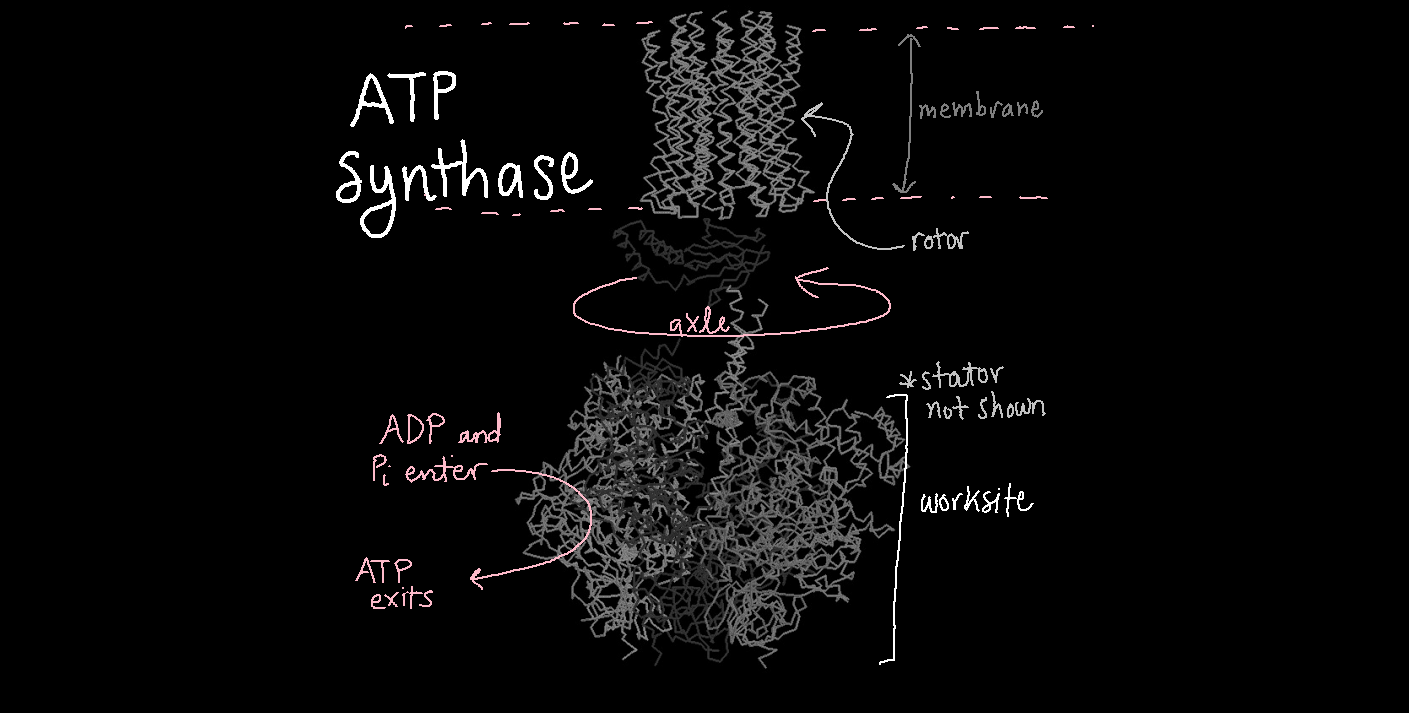ATP synthase is a really, really important protein for life. That’s because it makes ATP molecules, which are like the energy currency of the molecular world. (Essentially, ATP = Energy!)
As you may expect, ATP synthase works in the inner membranes of mitochondria. If mitochondria are the powerhouses of the cell, ATP synthase is the generator. In fact, ATP synthase even creates energy from rotational motion.

ATP synthase is made of several pieces and parts, but can be simplified into four main structures: a rotor, an axle, a worksite, and a stator. The rotor is located in the mitochondrial membrane, while the worksite sticks out of the membrane. The axle connects the rotor and the worksite, and the stator keeps everything in place. We will describe how each of the parts work together in just a moment.

Since ATP is full of energy, it takes a lot of energy to make ATP. ATP synthase gets this energy from rotational motion. But just like a wind turbine or a water wheel, something needs to push the rotor to generate that motion.
The rotational motion that ATP synthase uses comes from what is known as a proton gradient. Other proteins have moved as many protons as possible on one side of the mitochondrial membrane. Like all molecules, protons would rather be evenly spread out, so they want to cross back to the other side. So, ATP synthase and the protons trade favors: ATP synthase will move the protons back to the other side and the protons give ATP synthase energy by pushing its rotor.

When the rotor rotates, the axle rotates also. The axle protrudes into the worksite in such a way that it pushes part of the worksite (you could think of it as one work bench within the worksite) into a new position. When the work bench is not being pushed by the axle, it has an open position that can gather ATP materials. When the work bench is pushed, it squeezes into a closed position that also squeezes the ATP materials together into an ATP.

There are multiple work benches in the ATP synthase’s worksite, so whenever the axle turns, it pushes on a new work bench. This means ATP synthase can be working on making several ATPs all at once.
All work requires energy, and energy in ATP is used to do almost everything in your cells, and by extension, everything in your body. So next time you do a work out, or anything at all for that matter, thank ATP synthase for generating the energy you need!
To see an animation of ATP synthase in action, watch this video: ATP synthase in action

